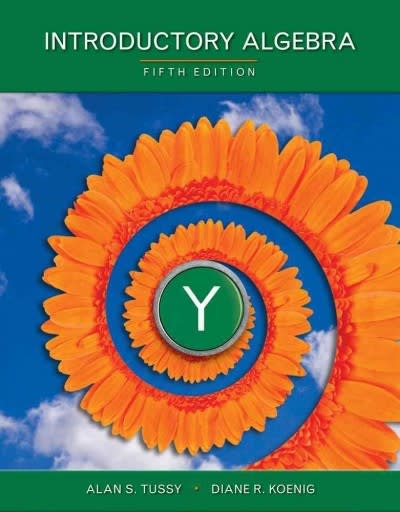Question
QUESTION Suppose you have two fair dice, each with 6 faces. One die is coloured blue and has the following faces: {1, 1, 1, 2,
QUESTION
Suppose you have two fair dice, each with 6 faces.
One die is coloured blue and has the following faces: {1, 1, 1, 2, 2, 3}.
The other die is coloured red and has the following faces {1, 1, 2, 2, 3, 3}. You run an experiment where you throw each die once and record the results.
(i) Explicitly write out the sample space S for this experiment. If pB is the probability distribution for the blue die and pR is the probability distribution for the red die, write out the probability distributions.
(ii) Let E be the event "The blue die is odd and the red die is even." Write out E and compute P(E).
(iii) Let F be the event "the sum of the dice is 5." Write out F and compute P(F). Are E and F mutually exclusive?
(iv) Give an example of an event G such that G S and G are mutually exclusive to both E and F.
Step by Step Solution
There are 3 Steps involved in it
Step: 1

Get Instant Access to Expert-Tailored Solutions
See step-by-step solutions with expert insights and AI powered tools for academic success
Step: 2

Step: 3

Ace Your Homework with AI
Get the answers you need in no time with our AI-driven, step-by-step assistance
Get Started


